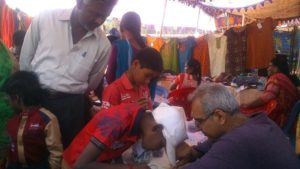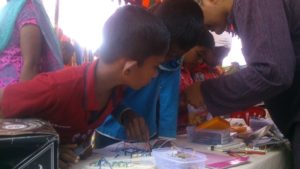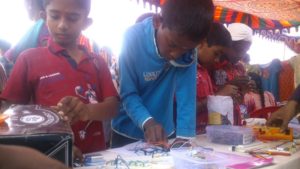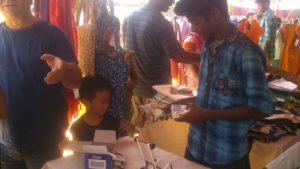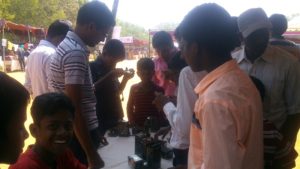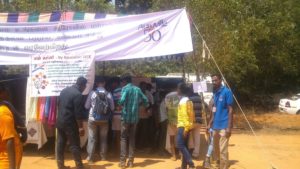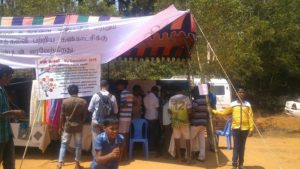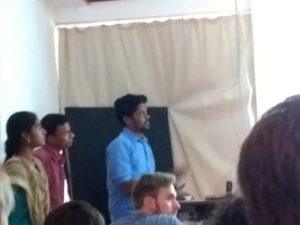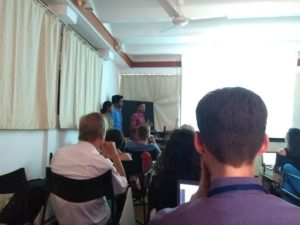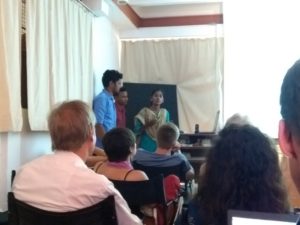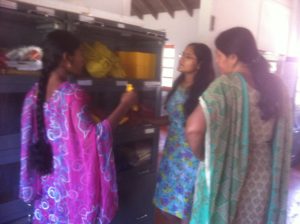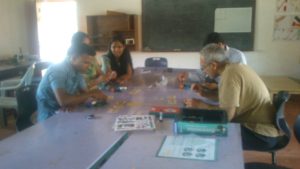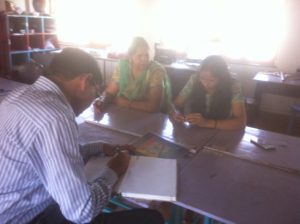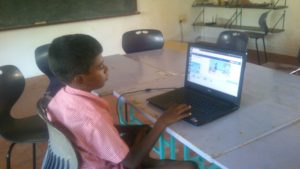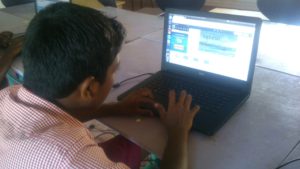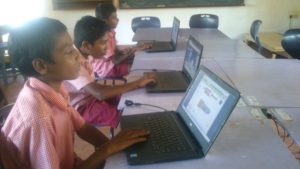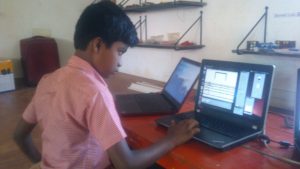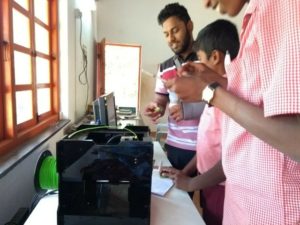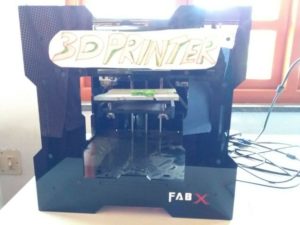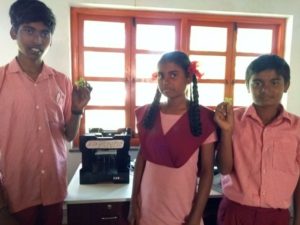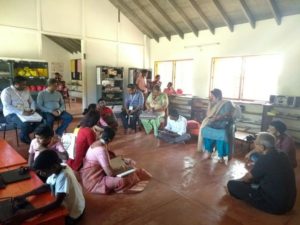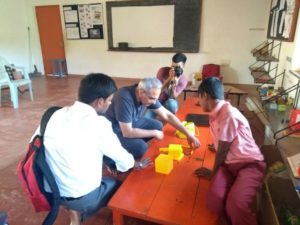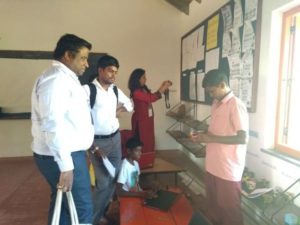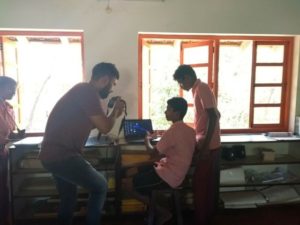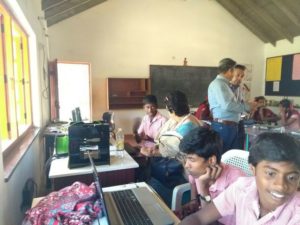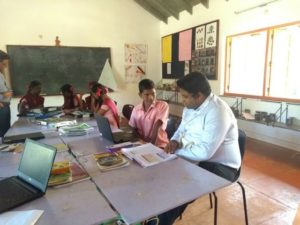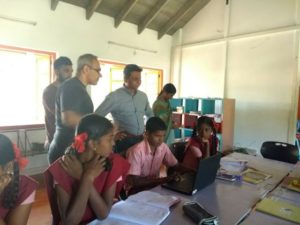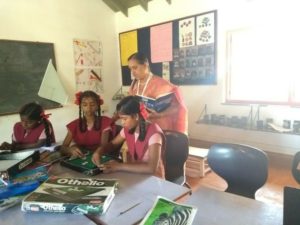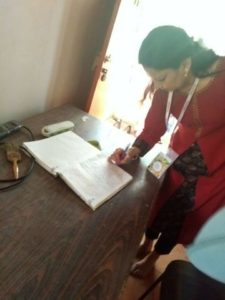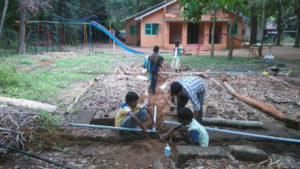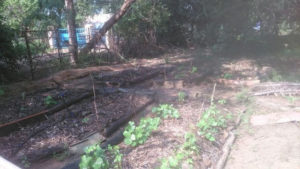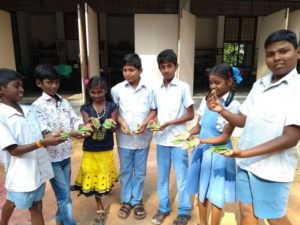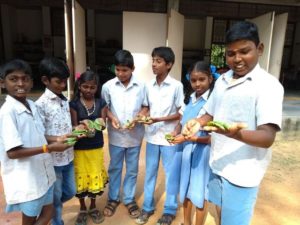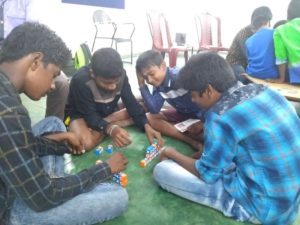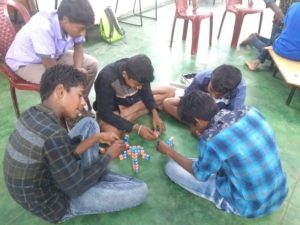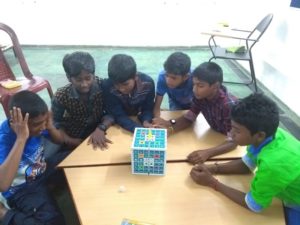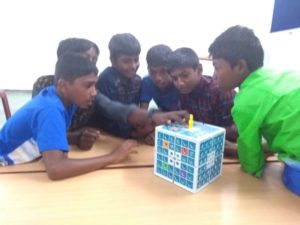-Poovizhi and Ranjith
Savarirayalu nayakar govt girls high school is applying for a national award in ICT and asked our support on Scratch and Geogebra. Children from 8th and 9th grade were interested to learn. On the first day we did a scratch course. We gave them a task to ask multiple questions and if the answer is correct it’ll move on to the next question else it’ll ask the same question until it is correct. Children were able to use controls and were able to find the logic. The next two days we did a course on Geogebra. Children first explored all the tools available in Geogebra and then drew an equilateral triangle. Some of the children drew it using regular polygon. Then we asked them to draw equilateral triangle by finding the intersection point. They used two circles and found the intersection point and were able to draw the triangle. Then we asked them to draw different triangles and find the sum of the angles of all the triangle. They found that the sum of all three angles of a triangle is 180 degree for all triangle.
On second day, we asked them to draw circle and to find out ratio of circumference and diameter of different circle.They found that the ratio of circumference and diameter is 3.14 (Pi value) for all circle. Then, we asked them to draw chord line on circles and make a triangle by choosing a point on circles with chord as a base of triangle and measure the angles of triangles. Then we asked them to find out the pattern in triangles in different circle. They found that the angle for all triangle at third vertex point on one section of circle is same and different from angle on other section of circle which are separated by chord line on circle and also the sum of angles of both section of circle is always 180 degree for all circle with different chord length.


